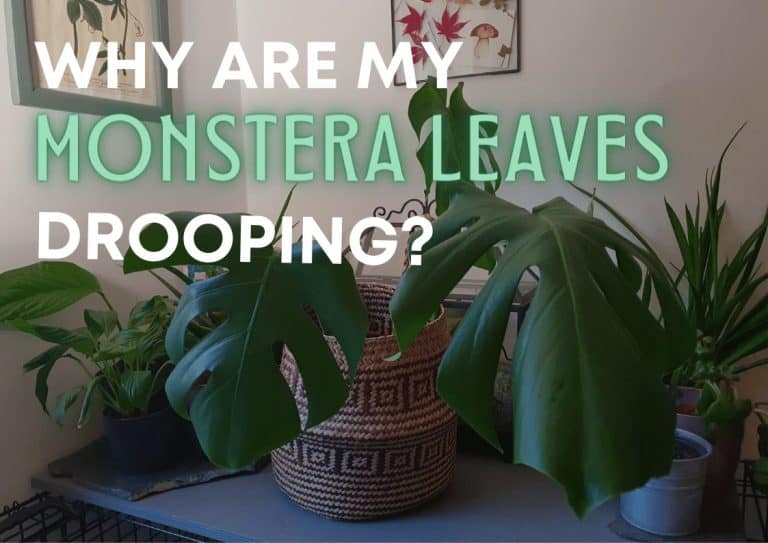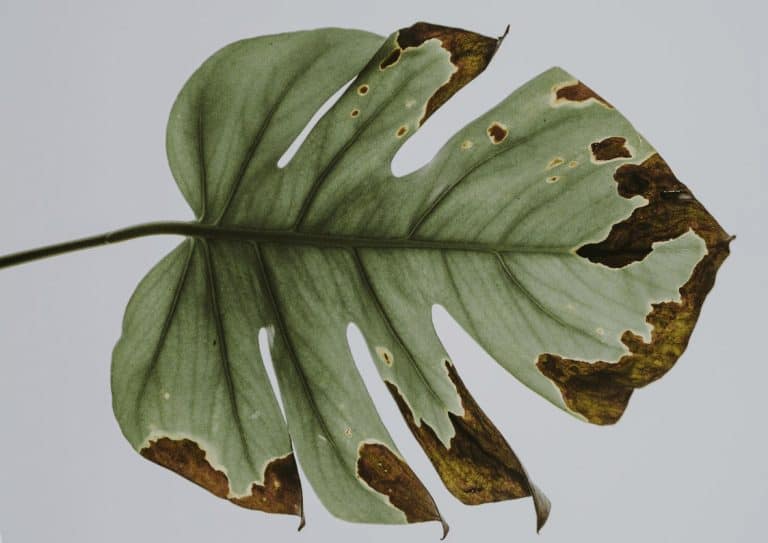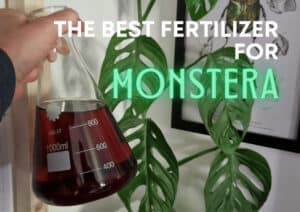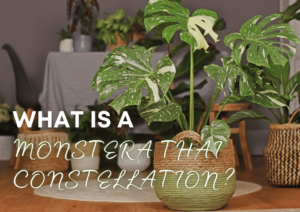Why Are The Leaves Falling Off My Monstera Plant? (Incl. Fixes)
-
Chris Dosser
- November 2, 2022
If you buy something using the retail links in our articles, sometimes we earn a small affiliate commission. This does not impact the products we recommend.
Known for being an easy-going group of plants, Monstera kept as indoor plants have few demands, however, too much or too little water, and this Araceae will make sure that you know it is unhappy by drooping or dropping its leaves.
If you have noticed your Monstera displaying droopy foliage or perhaps even leaves falling off, the moisture level of your soil is most likely to blame. Droopy, curling leaves often means that the Monstera is short of water and is unable to maintain its perky appearance.
Worry not however as these guys are fairly robust and so with corrective action there’s still time to turn things around!
In this post, we are going to explore why your Monstera is not thriving and what you might be able to do about it.
If you feel like the plant is beyond saving you might wish to hedge your bets by taking cuttings whilst you still can and using these propagation techniques to multiply your stock.

Why are my monstera leaves drooping?
If you have recently noticed the leaves on your Monstera starting to droop the most likely reason your plant is wilting is because it has not been getting enough water.
Most commonly, sub-optimal substrate is part of the problem. Poorly suited soil (such as that with a low % organic matter and high % of sand) might not be capable of retaining moisture for long enough so that the Monstera roots can take in what they need.
If your plant soil is moist and the leaves are still drooping, then it could be that your Monstera has become root bound – and through the limited substrate it has access to the plant is struggling to obtain a steady source of water to support all of its foliage.
In short, your plant has outgrown its pot, and you should consider repotting it.
Root bound means that the plant's roots have grown to the point that they tangle with each other, and there is not enough space (and therefore nutrients) available in the pot for your plant to grow.
Our Favorite Monstera Plants And Supplies On Etsy
What can I do to stop my monstera leaves drooping?
If your Monstera plant is underwatered, the first step you want to take is to saturate it well through bottom-up watering.
This means sitting your whole plant pot in a basin of water and leaving it for an hour or two. This will give the plant roots time to rehydrate and get your Monstera back on the road to perky leaves.
If after changing watering habits you still see leaves drooping then the Monstera is likely root-bound and will need re-potting.
- Invest in a new pot that is at least 2” wider in diameter than the current pot.
- Take your Monstera out of the current pot and gently brush off and shake off as much old soil as you can until the roots are relatively clean. Try to prevent damaging the root system whilst doing so.
- Set your Monstera in the middle of the new pot and add a nutrient rich potting mix.
- Water the new soil well and and set your plant back in indirect sunlight.
Why are my monstera leaves falling off?
If your Monstera is losing leaves, the stress the plant must be under is severe.
Look at the leaves that have fallen off your plant for a clue as to what’s going on. Changes in leaf color and leaf loss could be the result of overwatering or being overly exposed to direct sunlight.
- Yellowing leaves and wet soil are a good tip-off that your Monstera is getting too much water. Check beneath the top layer of soil and swap out the wet soil for dry to prevent root rot.
- Brown leaves with crispy edges also indicate that your plant is de-hydrated or that a significant amount of salt has built up.
- Leaves with black spots on them can indicate that your plant has been overwatered and that it is not getting enough sun in its current position in your home.

What can I do to stop my monstera leaves from falling off?
If your Monstera is dropping leaves because of underwatering, follow the instructions in our first example to make sure that your plant gets hydrated!
If you believe that your plant could be suffering from a build-up of salts, you want to try to dilute its effects by essentially ‘washing’ the soil to mobilise the salts and cause them to leach out of the substrate.
To do this pour water over the soil continuously for a short while. This should help to reduce the concentration of any built-up salt that is hampering your plant’s growth and development.
If your plant has black spots on the leaves but the soil is moist, try putting your plant in an area where it will have more sunlight or pick up a low cost full spectrum grow light.
Just be sure not to put it directly in the sun and choose an area of your home that gets a good amount of sun without the sun directly blazing in.
FAQs
As a tropical plant, the Monstera thrives in areas with higher humidity (although it will grow unhindered in the average room) and prefers warmer temperatures. Monstera can grow in temperatures between 65°F and 85°F, but it prefers the higher end of the scale. Below 60°F, though, you can expect to see some problems with your plant growth cycle.

Chris Dosser
Co-Founder of Eden Indoors
Chris is a self-taught horticulturist with over a decade of experience caring for houseplants and creating lush, thriving indoor oases. He specializes in Monstera, and by self admission has a serious problem with buying and propagating rare indoor plants!
Similar Posts
The Best Fertilizer for Monstera Plants: Effective Usage Tips
This guide will help you choose the optimal fertilizer for your Monstera so as to help maximize the plant's health and increase foliage production.
What Is A Thai Constellation Monstera: The Essentials
The Thai Constellation Monstera is a rare and highly sought-after houseplant with unique variegated leaves. This article explores the history, care, and propagation of this popular plant.



